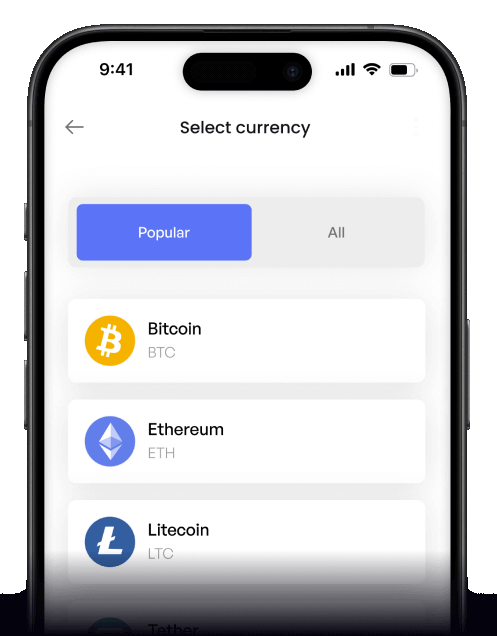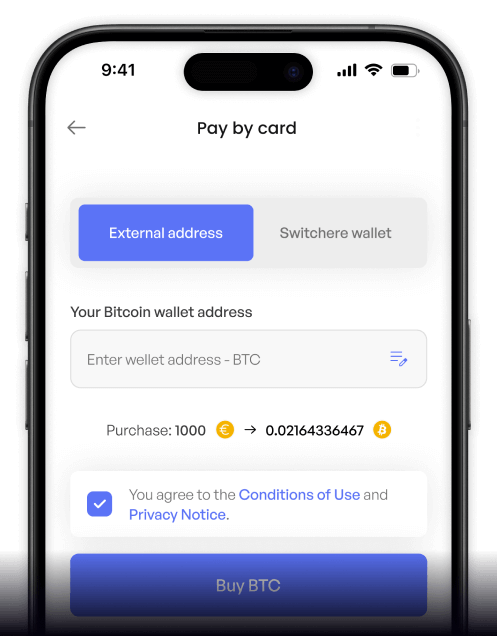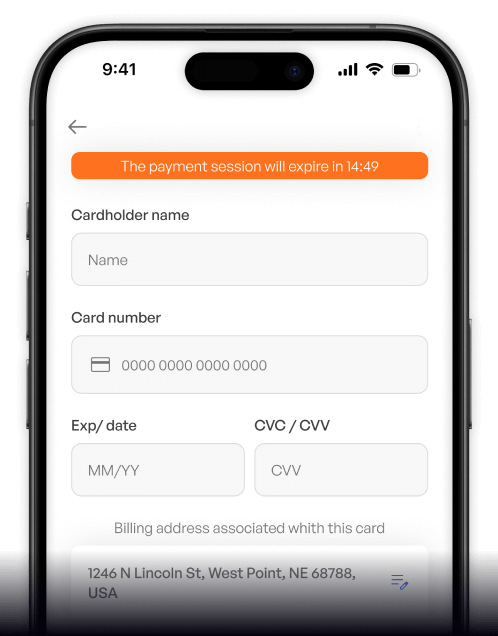- Startseite
- Konverter
- Azerbaijan Manat (AZN) zu Aave (AAVE)
Konvertieren
Azerbaijan Manat (AZN) zu Aave (AAVE) Sofort
Kaufen Sie Aave (AAVE) mit Azerbaijan Manat (AZN) einfach bei Switchere und profitieren Sie von schnellen und sicheren Transaktionen.
Über
Aave (AAVE)
Aave (AAVE) ist ein führendes dezentrales Finanzprotokoll (DeFi), das als Open-Source-Liquiditätsmarkt ohne Verwahrungspflicht funktioniert. Sein Hauptzweck ist es, den Nutzern die Möglichkeit zu geben, ein breites Spektrum an digitalen Vermögenswerten ohne Vermittler zu leihen und zu verleihen. Die Plattform nutzt ausgeklügelte Smart Contracts auf der Blockchain-Technologie, in erster Linie Ethereum, hat aber ihre Reichweite auf mehrere Chains ausgeweitet und damit ihre DeFi-Anwendungen verbessert. Nutzer, die Vermögenswerte in Aave-Liquiditätspools einbringen, verdienen passives Einkommen durch Zinsen und erhalten im Gegenzug verzinsliche aTokens, die ihr eingezahltes Kapital und die aufgelaufenen Zinsen darstellen. Kreditnehmer hingegen können überbesicherte Kredite oder innovative unterbesicherte "Flash Loans" aufnehmen, eine einzigartige Funktion für Entwickler.
Die Kerntechnologie von Aave basiert auf einer robusten Smart-Contract-Architektur, die sichere und transparente On-Chain-Transaktionen ermöglicht. Zu den wichtigsten Unterscheidungsmerkmalen gehört die Unterstützung von variablen und stabilen Zinssätzen, die den Nutzern Flexibilität je nach Marktbedingungen und Risikobereitschaft bieten. Der native AAVE-Token erfüllt in diesem dezentralen Netzwerk entscheidende Funktionen. Er fungiert als Governance-Token, der es den Inhabern ermöglicht, über Protokoll-Upgrades und Parameteränderungen abzustimmen und so die Zukunft des Aave-Ökosystems zu gestalten. Darüber hinaus kann AAVE im Sicherheitsmodul des Protokolls eingesetzt werden, was zu dessen kryptographischer Sicherheit beiträgt und einen Versicherungsschutz bietet, wobei die Inhaber eine Belohnung erhalten. Aave ist ein Eckpfeiler der Web3-Infrastruktur und bietet grundlegende Geldmarktdienste.
Wie man Aave (AAVE) kauft
Beliebte Münzen für Azerbaijan Manat (AZN)
Andere Münzen für Azerbaijan Manat (AZN)
Häufig gestellte Fragen
-
Was sind die wichtigsten Möglichkeiten, Aave (AAVE) mit aserbaidschanischem Manat (AZN) zu kaufen?
Der direkte Erwerb von AAVE mit AZN kann aufgrund begrenzter direkter Fiat-On-Ramps eine Herausforderung sein. Die gängigste Methode besteht darin, zunächst eine große Kryptowährung wie Bitcoin (BTC) oder einen Stablecoin wie USDT mit AZN per Banküberweisung auf einer Börse zu kaufen. Anschließend können Sie diesen Vermögenswert auf einer Plattform, die den AAVE-Token, ein bekanntes DeFi-Lending-Protokoll, listet, gegen AAVE handeln. Peer-to-Peer (P2P)-Plattformen könnten ebenfalls direkte Optionen von AZN zu Krypto anbieten. -
Welche Rolle spielt der AAVE-Token in seinem dezentralen Finanzprotokoll?
Der AAVE-Token ist ein entscheidender Governance-Token für das Aave-Liquiditätsprotokoll. Inhaber können über Vorschläge und Änderungen an den Parametern des Protokolls abstimmen. Zusätzlich kann AAVE im Safety Module der Plattform gestaked werden, wo Staker im Falle eines Defizits als Absicherung dienen und Belohnungen für die Sicherung des Protokolls verdienen. Er ist fundamental für die dezentrale Governance dieses führenden DeFi-Geldmarktes. -
Gibt es Sicherheitsrisiken bei der Umwandlung von AZN in AAVE, die ich kennen sollte?
Ja. Bei der Umwandlung von Fiat wie AZN in ein digitales Gut wie AAVE ist Sicherheit von größter Bedeutung. Verwenden Sie immer seriöse Kryptowährungsbörsen mit starker KYC/AML-Konformität. Hüten Sie sich vor P2P-Betrug und nutzen Sie nur Plattformen mit einem zuverlässigen Treuhandservice. Sobald Sie AAVE erworben haben, sollten Sie es von der Börse in eine persönliche, nicht-verwahrende digitale Geldbörse verschieben, bei der Sie die privaten Schlüssel kontrollieren. Dies schützt Ihre Vermögenswerte vor börsenbezogenen Risiken. -
Kann ich Zinsen verdienen, nachdem ich AAVE-Token gekauft habe?
Während der AAVE-Token selbst hauptsächlich für Governance und Staking gedacht ist, ist die Hauptfunktion des Aave-Protokolls das dezentrale Verleihen und Ausleihen. Nach dem Erwerb von AAVE können Sie das Aave-Protokoll verwenden, um andere Vermögenswerte (wie ETH oder Stablecoins) in Liquiditätspools bereitzustellen und Zinsen zu verdienen, wobei Sie im Gegenzug aTokens erhalten, die Ihre eingezahlten Gelder plus aufgelaufene Zinsen repräsentieren. Sie können Ihre AAVE-Token auch im Safety Module staken, um Staking-Belohnungen zu verdienen. -
Was sind Flash Loans und wie stehen sie im Zusammenhang mit dem Aave-Protokoll?
Flash Loans sind eine einzigartige Funktion des Aave-Protokolls und anderer DeFi-Plattformen. Sie ermöglichen es Benutzern, beliebige Mengen an Vermögenswerten ohne Sicherheiten zu leihen, unter der Bedingung, dass der Kredit innerhalb derselben Blockchain-Transaktion zurückgezahlt wird. Diese Funktion ist hochtechnisch und wird für Arbitrage, den Tausch von Sicherheiten und andere komplexe DeFi-Strategien verwendet. Das Verständnis von Flash Loans zeigt die fortschrittlichen Fähigkeiten dieses EVM-kompatiblen Liquiditätsprotokolls.






